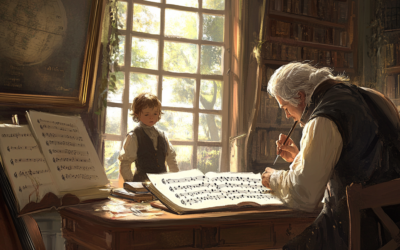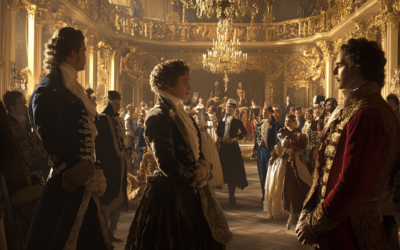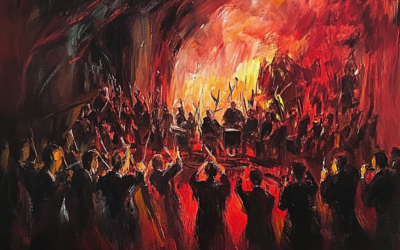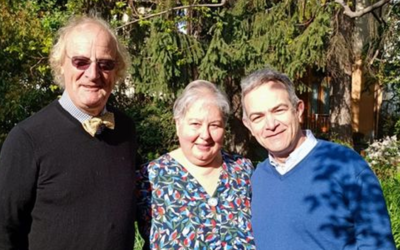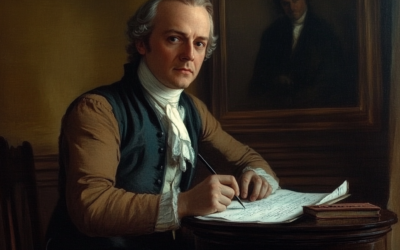A Questionable Canon
The Misattribution of Mozart’s K.2 89a (K.6 73i)
K.2 89a (K.6 73i) is no grand work of genius, but rather a simple canon exercise for four sopranos. Its problems range from missing voices and unresolved harmonies to a lack of text, suggesting it’s a poorly copied version of an earlier work.
Modern editors have tried to patch it up, but can we really still call this a work by Mozart? It’s time to question whether it belongs in his catalogue at all.
Mozart: The Fall of the Gods
This book compiles the results of our studies on 18th-century music and Mozart, who has been revered for over two centuries as a deity. We dismantle the baseless cult of Mozart and strip away the clichés that falsely present him as a natural genius, revealing the contradictions in conventional biographies. In this work, divided into two parts, we identify and critically analyze several contradictory points in the vast Mozart bibliography. Each of the nearly 2,000 citations is meticulously sourced, allowing readers to verify the findings. This critical biography of Mozart emerges from these premises, addressing the numerous doubts raised by researchers.
"A copy with missing voices and incomplete harmonies—Mozart would have known better."
Mozart: The Fall of the Gods
K.2 89a (K.6 73i), attributed to Wolfgang Amadeus Mozart, is a simple canon exercise in A major for four sopranos in unison. This piece closely resembles the Kyrie K.89, which is also written for four sopranos in unison. However, unlike the Kyrie, which serves a clear liturgical purpose, K.2 89a (K.6 73i) seems more like an incomplete experiment.
In this supposed composition, Mozart wrote only six measures for four voices. The piece is stagnant, with no modulations as it remains firmly in A major throughout. There is an overwhelming amount of repetition, suggesting a lack of imagination, even if one were to excuse it as a contrappuntal exercise.
This is where things become problematic. Although Wolfgang arranged the piece for four voices, the canon actually requires five to achieve complete harmonies. Without a fifth voice, the piece sounds incomplete, leaving discordant gaps that Mozart, if he had composed it, would surely have recognized.
The fifth voice is not indicated in the original manuscript, yet modern editors, including the Neue Mozart-Ausgabe (NMA), have added it in parentheses. This fifth voice logically enters at measure 13, filling the incomplete harmonies that otherwise sound weak. Curiously, Mozart left the final three measures filled with pauses, which suggests he may not have fully solved the harmonic puzzle presented by the canon.
Moreover, Amadé didn’t bother writing out any text, leaving many notes in a disjointed state, as though he were copying from an original source that had syllables of text he ignored. In an attempt to fill this void, modern editions have introduced whimsical verses, such as:
“Hei, wenn die Gläser klingen, so lasst uns alle fröhlich sein, und lasst uns lustig singen, ja singen ja lustig singen, am Tisch beim kühlen Wein.”
(“Hey, when the glasses clink, let’s all be merry and sing happily, sing sing joyfully, at the table with cool wine.”)
Breitkopf’s edition, unlike the NMA, corrected the canon by discreetly adding the fifth voice without explicitly saying so, transforming the piece into a Kanon für 5 Stimmen (canon for five voices) to make it more marketable.
Given that this is clearly a poorly resolved copy of a canon by an anonymous author, with Mozart forgetting the fifth soprano’s entrance, it should neither be considered an original composition nor included in his official catalogue.
You May Also Like
Leopold Mozart: A Portrait in Shadows
Leopold Mozart’s life was a whirlwind of ambition, deceit, and disappointment—a stark portrait of a man chasing success at any cost.
The London Pieces: Mozart or Make-Believe?
The London pieces, edited for modern tastes, lose their authenticity. Only the uncorrected originals show Mozart’s true early voice—naïve yet authentic.
The Myth of the “Viennese Classics”: Mozart’s True Heritage and the Empire’s Agenda
Mozart wasn’t the quintessential Viennese; rather, he was shaped by German heritage and an opportunistic empire that controlled music as fiercely as it did its people.
The Nationalistic Roots of the Philharmonic Legacy
Under Goebbels, the Berliner Philharmoniker became an instrument of Nazi propaganda, framing German composers as the supreme guardians of musical heritage.
Australian Scholars Confirm Our Findings on Mozart’s Forged Catalogue
Professor Martin Jarvis of Darwin University confirmed our long-held findings that Mozart’s personal catalogue is a forgery, during his recent lecture The Mozart Scam. Forensic analysis continues to unravel the myths surrounding Mozart’s legacy.
The Italian Journey
The Mozarts’ Italian journey of 1769 was not a leisurely Grand Tour but a strategic mission driven by ambition, navigating the treacherous roads of 18th-century Europe in pursuit of fame and fortune.


